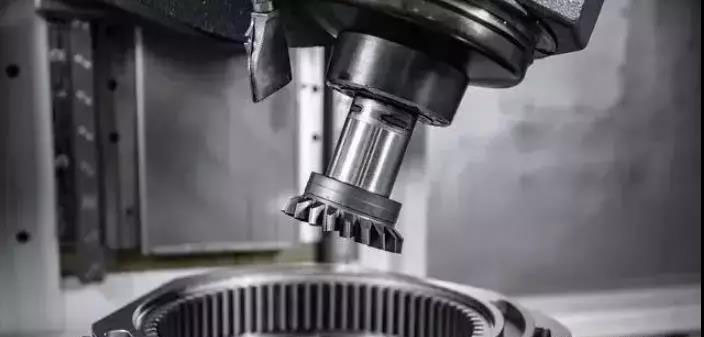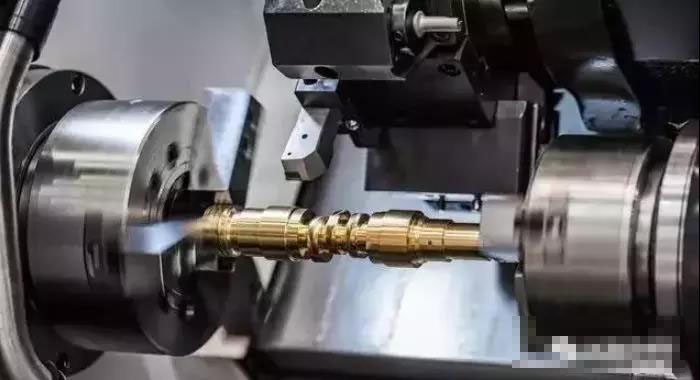Four standard threads of metric, inch, modulus and diameter control can be turned on a CNC lathe. Regardless of which thread is turned, a strict movement relationship between the lathe spindle and the tool must be maintained: that is, every revolution of the spindle (that is, the workpiece) One turn), the tool should move evenly by a lead distance (of the workpiece). The following analysis of ordinary threads will strengthen the understanding of ordinary threads in order to better process ordinary threads.
Size Analysis Of Ordinary Thread
CNC turning machine require a series of dimensions for the machining of ordinary threads. The calculation and analysis of the dimensions required for ordinary thread machining mainly include the following two aspects:
1. Workpiece diameter before thread machining
Considering the expansion of the thread profile, the diameter of the workpiece before threading is D/D-0.1P, that is, the major diameter of the thread is reduced by 0.1 pitch, which is generally 0.1 to 0.5 smaller than the major diameter of the thread according to the material deformability.
2. Thread machining feed
The feed amount of the thread can refer to the bottom diameter of the thread, that is, the final feed position of the thread cutter.
The minor diameter of the thread is: large diameter-2 times the tooth height, tooth height = 0.54P (P is the pitch)
The feed amount of thread processing should be continuously reduced, and the specific feed amount should be selected according to the tool and the working material.

Tool Setting And Setting Of Common Thread Cutter
If the turning tool is installed too high or too low or too high, when the tool is eaten to a certain depth, the flank face of the turning tool will resist the workpiece, increase the friction force, and even bend the workpiece, causing the phenomenon of gnawing; Chips are not easy to be discharged. The direction of the radial force of the turning tool is the center of the workpiece. In addition, the gap between the traverse screw and the nut is too large, which causes the depth of the tool to be continuously and automatically deepened, so that the workpiece is lifted and the tool is gnawed. At this time, the height of the turning tool should be adjusted in time to make the tip of the tool the same height as the axis of the workpiece (the tip of the tailstock can be used for tool setting). In rough turning and semi-finishing turning, the position of the tool tip is about 1% D higher than the center of the workpiece (D represents the diameter of the workpiece to be processed).
Insufficient clamping of the workpiece. The rigidity of the workpiece itself cannot withstand the cutting force during turning, resulting in excessive deflection, which changes the center height of the turning tool and the workpiece (the workpiece is raised), resulting in a sudden increase in the depth of cut and tool gnawing. At this time, the workpiece should be clamped firmly, and the tailstock center can be used to increase the rigidity of the workpiece.
Common thread tool setting methods include trial cutting and automatic tool setting with a tool setting instrument. You can directly use the tool to test the tool, or use G50 to set the workpiece zero point, and use the workpiece shift to set the workpiece zero point for tool setting. The tool setting requirements for thread processing are not very high, especially the Z-direction tool setting has no strict restrictions, which can be determined according to the programming processing requirements.
Programming And Processing of ordinary threads
In the current CNC lathes, there are generally three processing methods for thread cutting: G32 linear cutting method, G92 linear cutting method and G76 oblique cutting method. Due to different cutting methods and different programming methods, machining errors are also caused. different. We must carefully analyze the operation and use, and strive to process high-precision parts.
- With the G32 straight cutting method, since both sides of the cutting edge work at the same time, the cutting force is large and the cutting is difficult, so the two cutting edges are easy to wear during cutting. When cutting a thread with a larger pitch, due to the larger depth of cut, the blade wears faster, resulting in an error in the pitch diameter of the thread, but the processed tooth profile accuracy is higher, so it is generally used for small pitch thread processing. Since the cutting of the cutting tool is completed by programming, the processing procedure is long, and the cutting edge is easy to wear, so frequent measurement must be done during processing.
- The G92 linear cutting method simplifies the programming and improves the efficiency compared with the G32 command.
- G76 oblique cutting method, because it is single-sided cutting, the cutting edge is easy to damage and wear, so that the processed thread surface is not straight, the tool tip angle changes, and the tooth profile accuracy is poor. However, due to its single-sided edge work, the tool load is small, chip removal is easy, and the cutting depth is decreasing. Therefore, this processing method is generally suitable for large pitch thread processing. Because this processing method is easy to remove chips and the cutting edge processing conditions are better, this processing method is more convenient when the thread precision requirements are not high. When processing higher-precision threads, it can be finished by two-tool machining, firstly using G76 machining method for rough turning, and then G32 machining method for finishing. But pay attention to the accurate starting point of the tool, otherwise it is easy to buckle randomly and cause the parts to be scrapped.
- After the thread processing is completed, you can judge the thread quality by observing the thread profile and take measures in time. When the thread crest is not sharp, increasing the cutting amount of the knife will increase the major diameter of the thread. The increase depends on the plasticity of the material. When the tooth top has been sharpened, if the cutting amount of the knife is increased, the large diameter is proportionally reduced. According to this feature, the cutting amount of the thread must be treated correctly to prevent scrapping.

Ordinary thread detection
For general standard threads, thread ring gauges or plug gauges are used to measure. When measuring external threads, if the “over-end” ring gauge of the thread just screwed in, but the “end-stop” ring gauge does not screw in, it means that the processed thread meets the requirements, otherwise it is unqualified. When measuring internal threads, use threaded plug gauges and measure in the same way. In addition to the thread ring gauge or plug gauge measurement, other measuring tools can also be used to measure the pitch diameter of the thread with a thread micrometer, and the pitch thickness of the trapezoidal thread and the pitch diameter of the worm with the tooth thickness vernier. The measuring needle is used according to the three needles. The measuring method measures the pitch diameter of the thread.


